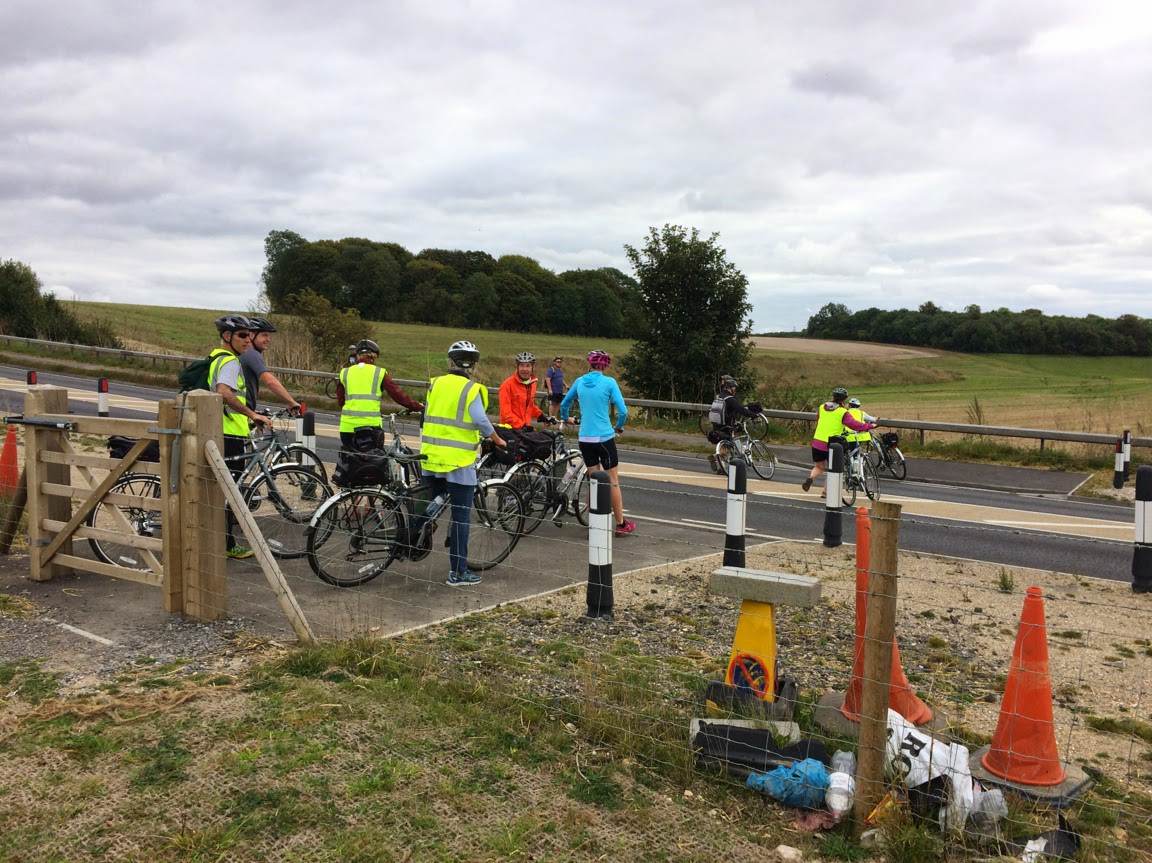Today, the Daily Telegraph carried an article about three such individuals, Mr David Jacques of the University of Buckingham, Prof Tim Darvill of Bournemouth University and Andy Rhind-Tutt of the Amesbury Museum and Heritage Trust spouting an awful lot of claptrap-dressed up as science regarding the discovery of the latest-dated Mesolithic encampment ever found in the UK at a site a mile and a half to the south of Stonehenge at a place called Blick Mead. Indeed, if I was a Vice Chancellor at either of these universities I would be asking some serious questions about the logical reasoning abilities and lack of academic rigour of some of my staff.
Second, even if a tunnel were to adversely impact on this new archaeology, does it matter? Well, only if the periods of history and pre-history favoured by Jacques, Darvill and Rhind-Tutt are the be-all-and-end-all of archaeology; which of course they are not. The reality is very different of course, as everything that happened prior to you reading this line, happened in the past - whether it it was 10,000 years ago or 10 femtoseconds ago - it is all worthy of study by archaeologists. All of it is important and all of it valuable, but to suggest one element is more important than another is arrogance in the extreme. Importance is purely a matter of opinion - not fact.
Third, as someone with an interest in more recent history, I could equally argue that the role of the World Heritage Site and its environs, from 1914 to the present day, is of much greater national and international importance because of its involvement in WWI and WWII and thus national survival and the preservation of the free-world, than are any other events or structures in the area. I could argue that, but my argument would be as irrelevant and ill-considered as the arguments of Jacques, Darvill and Rhind Tutt.
You could look at all this another way - and perhaps we should. Things that are planned and built today become the archaeological sites of tomorrow. That would, of course, include any tunnel to bypass Stonehenge. It's fame is already global and it isn't yet built. Picture a time several thousand years past when someone had the inspiration to build something unique in wood on a greenfield site north west of Amesbury. There were probably a bunch of naysayers complaining about loss of open-space amenities such as grazing or hunting, and their descendants millennia later were still bitching on about the evils of change when the wood was replaced with stone and the stones were re-arranged. Change never suits everyone.
However, if it wasn't for change, for man shaping his environment to meet his current and future needs, there would be no science of archaeology at all. Ironic that isn't it; the obsession with preserving the past prevents change and the creation of history.
It also means that, no matter where you were to stuff the A303 - along, its current line, or north, or south of it, it is going to affect some archaeology, all of it important to someone - unless it goes through somewhere that has never felt the touch of the hand of man. To be honest, the only place where this can be pretty much guaranteed in the WHS is - yes - underground. A tunnel of such magnificent proportions that it dwarfs its antecedents - a man-made wonder of the 21st century and piece of premier archaeology of the future. What better legacy for a World Heritage Site.
Now, how about the red algae, Hildenbrandia rivularis, found at Blick Mead that gives the flint a pink appearance. It's unusual in the UK, but it is found throughout Europe and beyond, most frequently, it would seem, in countries and regions with a high degree of forestation and little farming. That rather begs the question if the reason it is so unusual in the UK is simply down to the level of deforestation and agriculture. When you dig a little deeper into the story, yet again, there is a degree of selectivity in the facts that are presented. Yes, Hildenbrandia rivularis is very dependent on warmish hard water, but it is also very, very sensitive to phosphate levels in the water, phosphates that are applied to farmland all around Stonehenge, phosphates that arise from human and animal waste across the catchment area, phosphates that leach out of graveyards often located close to streams and rivers. Perhaps we should replant Salisbury Plain with trees, depopulate the whole area, disinter the dead and ban all forms of farming?
There is an even more bizarre possible explanation for Hildenbrandia rivularis being at Blick Mead - the building of Stonehenge itself. How is that possible? Well, when you look at the distribution of this algae round the UK, it is most common in Yorkshire and the east and west of Wales. The map below shows the distribution, though apologies for the small size of the dots. I'm sure you will note that the sites in west Wales are very close to Carn Goedog, the site of origin of Stonehenge's Blue stones. So, there is a chance that the Hildenbrandia rivularis hitched a ride on the stones as they made their way the 160 miles to Stonehenge. That would, of course, mean they are an introduced species and, some would say, ought to be exterminated.
As for Mr Rhind-Tutt and his tall tale of a "tunnel with one exit lane." It exists only in the convoluted recesses of his imagination. But if the government could construct the the tunnel 4 lanes in each direction instead of the proposed 2, for the same £1.3bn, most of the folks in the local area will be well-pleased.


















































